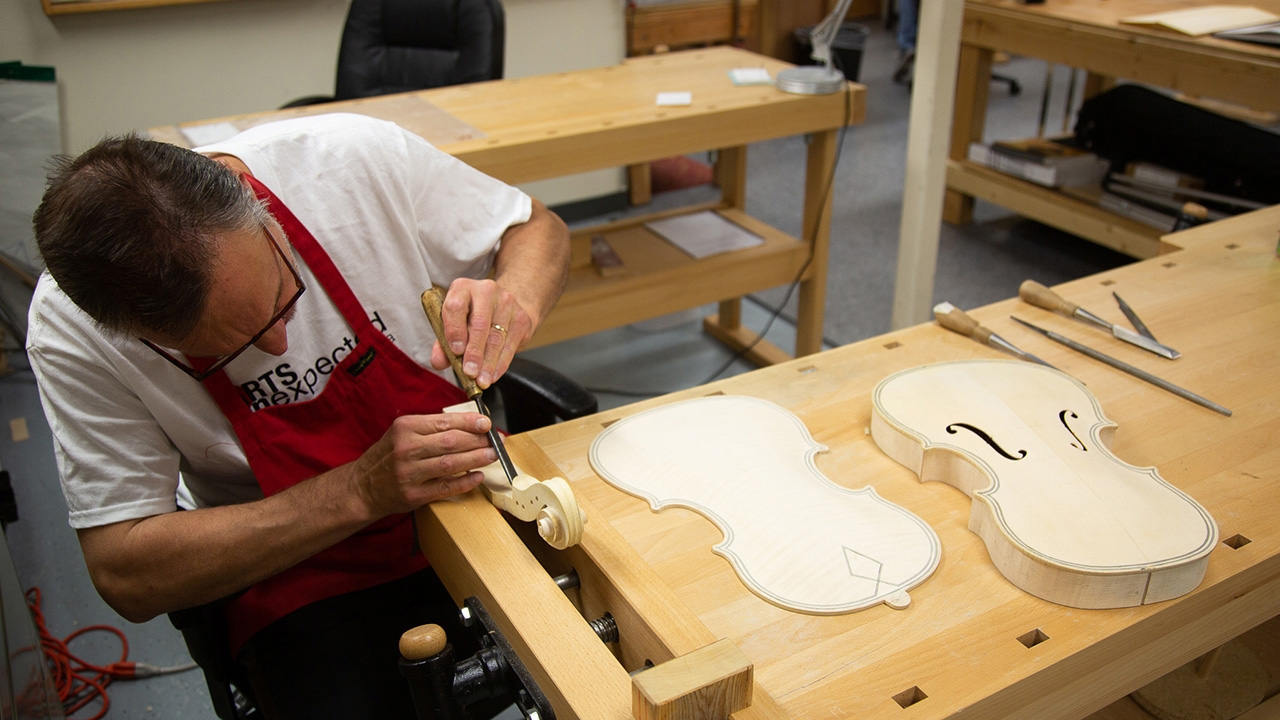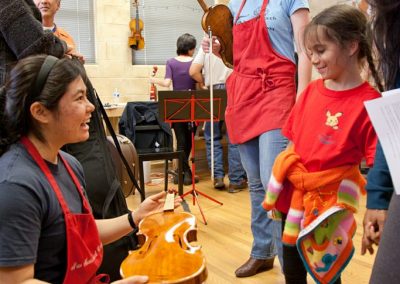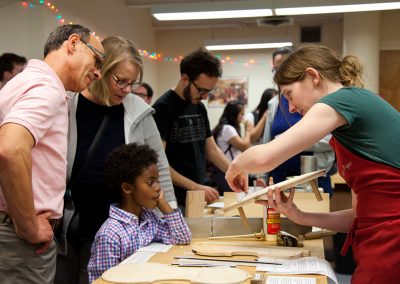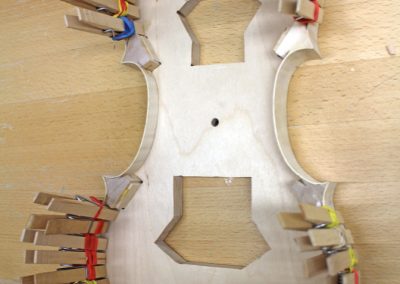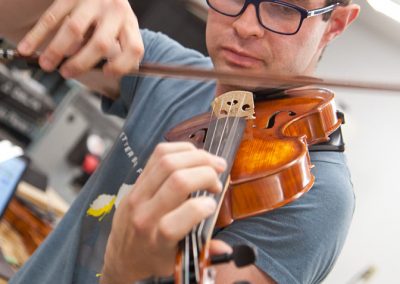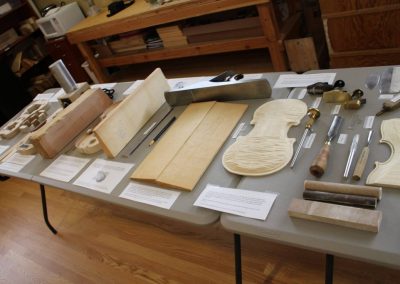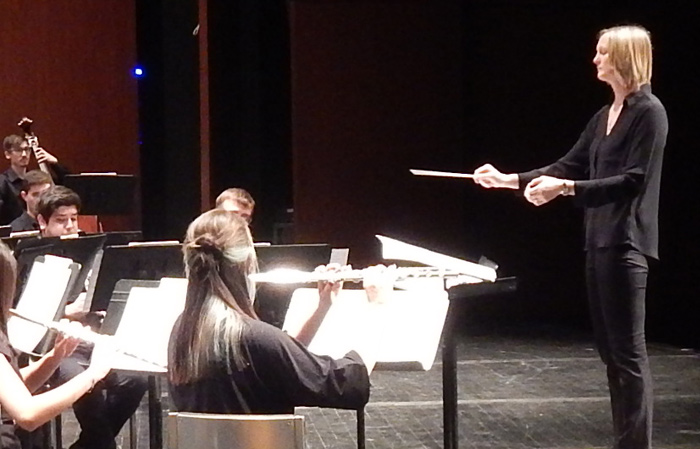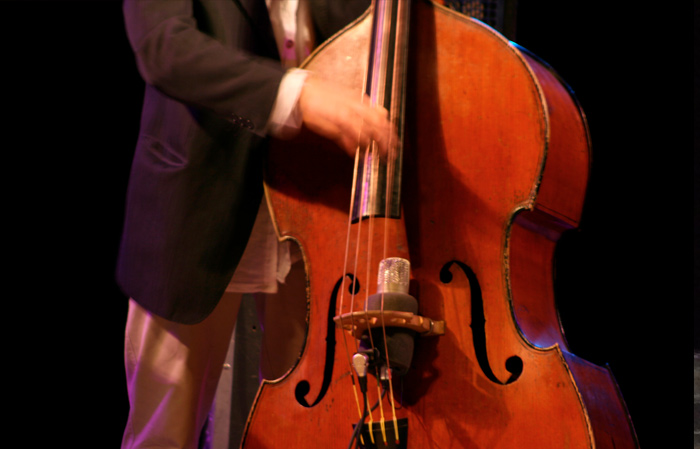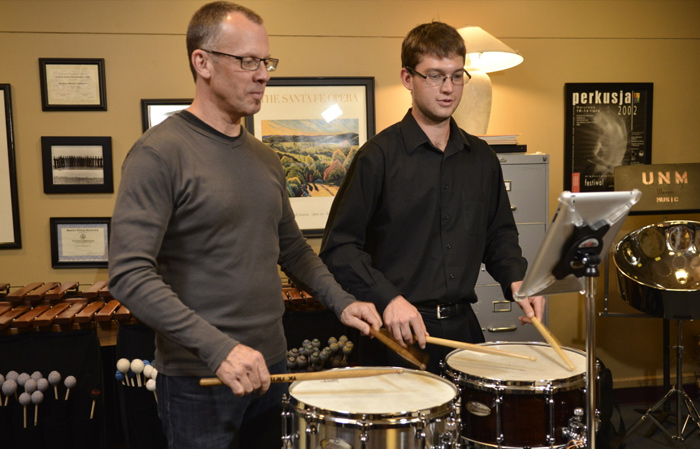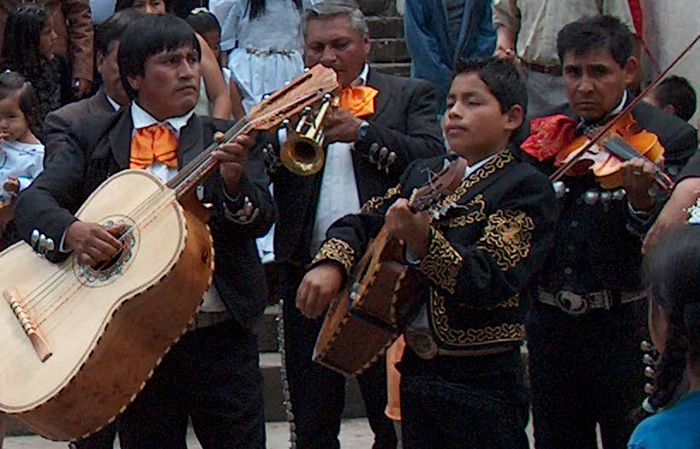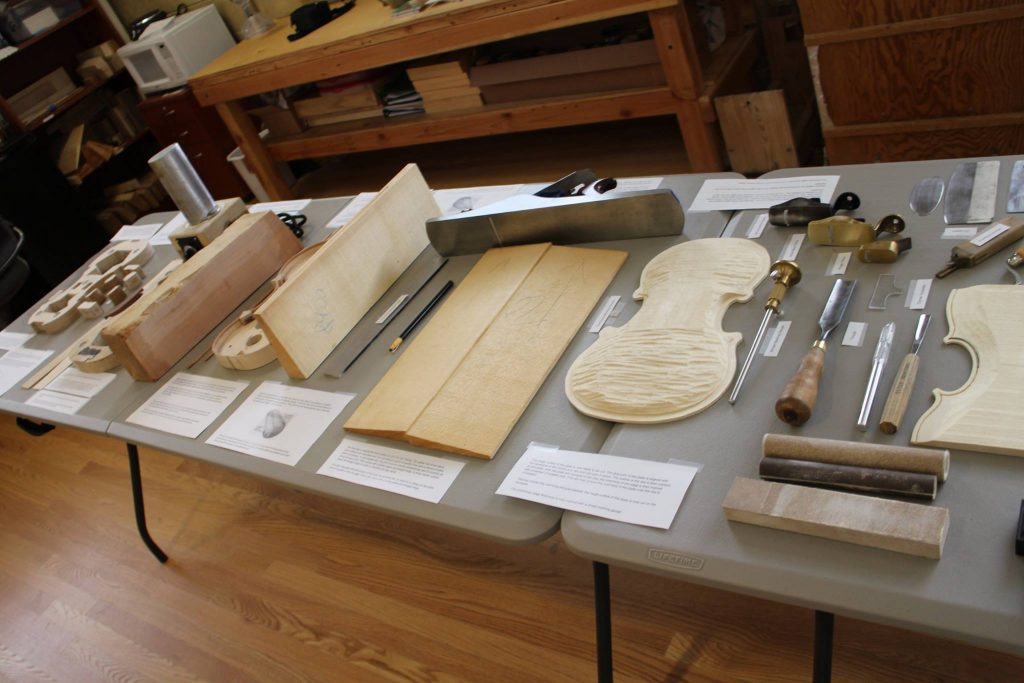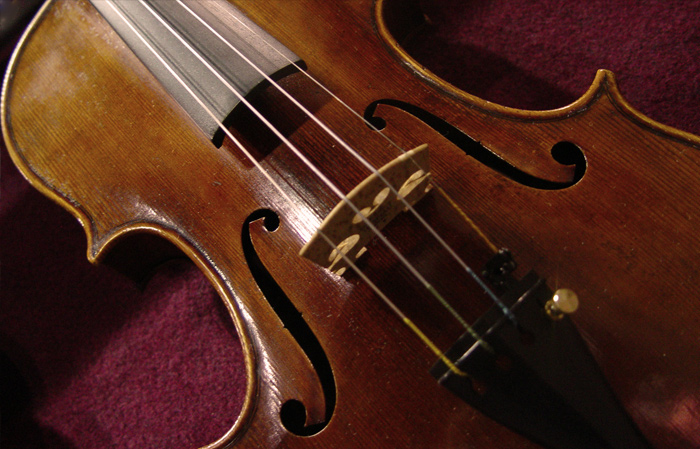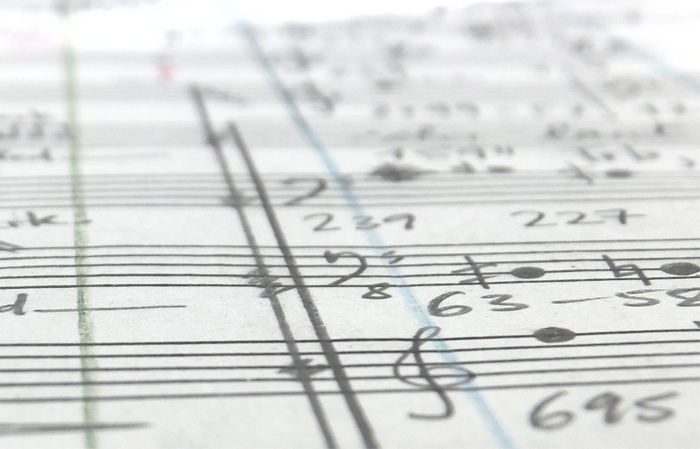Violin Making
Department of Music
The UNM College of Fine Arts offers a violin making class where students learn to handcraft a violin from raw pieces of wood, using the traditional methods and tools of lutherie that have been in place for over 400 years
The violin making program at the University of New Mexico, located in Masley Hall, is the only university program of its kind in the country.
Students in the program make one instrument while enrolled – a process which takes a few hundred hours, as work is done mostly with hand tools such as gouges, chisels, knives, planes, and scrapers. Meeting two evenings a week, the average student completes their instrument in five semesters. The program is not meant to prepare students for a career in violin making, but simply to offer them a unique and intensely rewarding experience.
Students from all disciplines, as well as community members, are invited to apply to the program. Prior woodworking experience is not required, but potential students are required to meet with the instructor prior to acceptance, where they will be asked to demonstrate some aptitude for the skills required.
For more information contact Klarissa Petti at kpetti@unm.edu
Class teaches the traditional art of violin making
By Mary Beth King
The University of New Mexico prides itself on its cutting-edge technology and researchers making innovative strides in science and healthcare. But in a quiet corner of Masley Hall, students eschew laptops and use mostly hand tools to craft violins, musical instruments originating in Renaissance Italy.
The class was started in 2008 by UNM English and American Studies professor Peter White, who trained in the United States and Poland to make violins, violas, violoncellos, and mandolins. White believed violins were being made in the New World as early as the 16th century, instrument-making being introduced at that time by Spanish missionaries. They would have been less sophisticated, but it’s probable the tradition made its way to the area now known as the American Southwest even before it was introduced to the east coast area by European settlers.
White’s student Klarissa Petti started taking the class in 2012 and took over teaching class in 2015 in her senior year. She now teaches the art of making violins to about nine students.
“It’s an incredibly unique experience. Some people are fascinated with making something with their own hands. There’s no feeling like it.”
Luthier Klarissa Petti
Petti has a degree in music from UNM and plays the cello. In addition, she is a luthier with her own business making cellos, violins, and violas. The UNM class is part of the New Mexico Musical Heritage Project (NMMHP), an interdisciplinary course that teaches students the art of violin-making and how to play Native American and Hispanic folk tunes of New Mexico.
As a cellist, Petti said she had the realization one day that, “Oh, someone has to make these… I like working with my hands and also knew that I didn’t want to be a performer” so she started studying with White to be a luthier. She continues to study with renowned Taos violin maker David Caron.
Petti’s first project in White’s class was a cello, which took an estimated 600 to 700 hours to make.
“It’s a lot of hard work and it takes a lot of dedication and patience,” she observed.
Making a violin usually takes students about 300 hours spread over several semesters using classical lutherie methods and primarily hand tools such as gouges, chisels, planes, scrapers. Each instrument comprises approximately 60 pieces of spruce, flamed maple, willow, and ebony that must be painstakingly sawn, joined, carved, channeled, inlaid, smoothed, glued, and varnished.
“I’m one of the fast ones,” said biology major Cameron Kunstadt, who is nearing completion of his violin after two years in the class.
“I’ve been interested in history, the Renaissance, and classical music and how the violin fits in,” said Rob Wisnewski, a non-degree, non-traditional student. A critical care registered nurse who is approaching retirement, he is waiting for the final coat of varnish to dry on his first violin and has started working on a viola. He plays the guitar in performances by the NMMHP.
Charles Westmark has a degree in psychology and plays jazz. He’s only a few hours away from completing his first violin after three years in the class.
“It’s a cool thing to do… an exercise in self-discipline. I wanted to do something that will outlive me,” he said, adding that he’s ready to start crafting another violin.
The meticulously crafted work makes a difference in value. Petti said some Chinese-made violins are cranked out on an assembly line in a couple of days and cost a few hundred dollars to buy. The two handmade violins she made as a student in the NMMHP have been appraised at about $7,000 each.
“So yeah, they’re the real thing.”
“It’s an incredibly unique experience,” Petti said as she helped Westmark smooth the neck of his violin with a metal blade. “Some people are fascinated with making something with their own hands. There’s no feeling like it.”
Petti quoted White, saying, “The beauty of violin-making is that you use your art to make an instrument on which more art is made.”
***
You can follow the NMMHP and Petti’s class on Facebookto find out about upcoming performances and listen to tunes performed by the group. The group occasionally holds impromptu performances on the UNM campus and hosts a yearly open house. If you’d like to know more about the class or tour the workshop, please contact Petti at kpetti@unm.edu.

